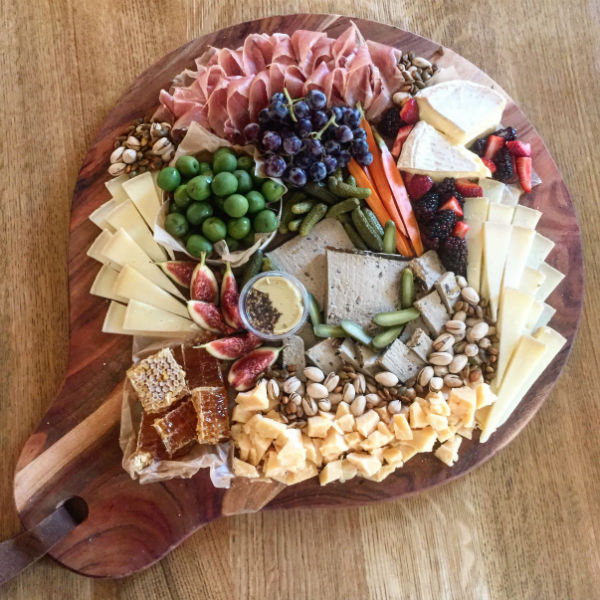5 Tips To Making a Beautiful Cheese & Charcuterie Board
Cheese and Charcuterie are a perfect pairing. Artisan cheeses, salamis, pates, and a wide variety of cured meats and other products have become increasingly popular, especially in the last few years. Curated cheese and Charcuterie boards and platters have infiltrated the foodie world via social media, showcasing beautiful edible works of art. Building a homemade Charcuterie platter by yourself can seem like an intimidating task, but with a few tips and tricks from our friends at Chefs Catalog, you will be sure to end up with a creative, fabulous, impressive cheese tray that will be a definite conversation starter.
Tip #1: Start With How Many People You’ll Be Serving
If the cheese is to be served as an appetizer, a good amount to start with is between 1 to 2 ounces of cheese per person. If adding Charcuterie and pate, calculate 0.5 to 1 ounce per person. This is a general guideline but it changes depending on the type of event, what it’s being served with, size of the party, etc. Three kinds of cheese, one salami, and one pate are a balanced assortment to have on a platter. Add up to five types of cheeses, two types of salamis & one type pate, total, but no more than that. This way the palate won’t get overwhelmed and one will be able to appreciate and savor all the various cheeses and meats individually. Once it is determined how much cheese & Charcuterie you need, it’s time for the fun to start!
Tip #2: Visit Your Local Cheese Shop
If you are able to go to a nearby cheese shop for the cheese, I encourage you to do so. It is the best way to familiarize yourself with the vast types of cheeses and accompaniments that are out there. Getting to taste what you are buying beforehand is part of this delicious cheesy adventure. Ask the Cheesemonger what tastes the best, if there are any new products they are excited about, and what they recommend.
Tip #3: Choose a Variety of Textures, Milk Types, and Cured Styles for your Charcuterie Board
Textures in cheese range from soft, creamy, semi-soft to semi-firm, dry, hard, among others. When selecting cheeses for a platter, choose a variety of these textures, as well as different styles, flavors, and milk types (cow, sheep, goat, buffalo). Adding cured meats and pate will only enhance this tasty platter. I suggest having one cured meat such as a dry salami, prosciutto, or Jamon serrano; one spicy option such as spicy calabrese salami, n’duja, or soppressata, and one pate – either country style or a mousse.
Tip #4: Get Creative With Shapes & Colors
When building your Cheese and Charcuterie board, slice up your cheese before arranging it on the platter. Keep the soft, ripe cheeses intact, as a full wedge. Slice the other firmer cheeses in triangles, chunks, natural crumbles, or squares. Try having different shapes for each cheese to enhance the visual aspect of the platter. It is great to use local and seasonal garnishes such as fresh herbs, edible flowers, jams, nuts, honey, dried fruit and fresh colorful fruit. I like using rosemary and thyme; I love the color contrast they create with the cheese. Garnish the platter with items that pair well with the cheeses (ask your Cheesemonger!). Include a pickled item, mustard, jam, olives, as this pairs well with Charcuterie. Lastly, serve your cheese platter at room temperature for maximum enjoyment in flavor and texture.
Tip #5: Choose Wines from the Same Region as Your Cheeses
When selecting a few wines, pair younger, fresh cheeses with crisp whites, fruity lighter reds, champagne, or sparkling wine. Older, funkier, more aged cheeses pair better with full-bodied reds, red Port or a craft IPA. Otherwise, pair the cheese with a wine that is from the same region of the cheese. Pairing one wine with the platter can be challenging since the cheeses are all so different. Opt for sparkling wine, demi-sec champagne or a blonde ale.
Most of all, have fun making the platter and let your creativity take over. Enjoy!



